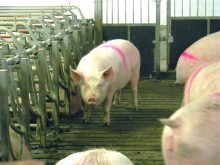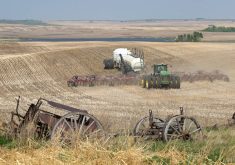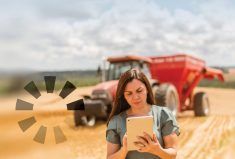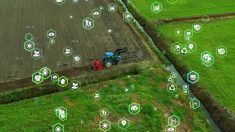The technology explosion and changes to agricultural systems are altering the view of the average Canadian farm.
New technology could mean different things to different people. To some farmers it could be bigger or smaller fields, buying some new equipment, or maybe some more advanced data utilization and management techniques.
However, these changes don’t only affect farmers, says Guy Ash, the global training manager at Pessl Instruments. In a recent interview with journalist Ed White on the Glacier FarmMedia podcast “Between the Rows,” Ash suggested that as our farming systems evolve the role of agronomists is also going to change, specifically due to new technologies flooding the market.
Read Also
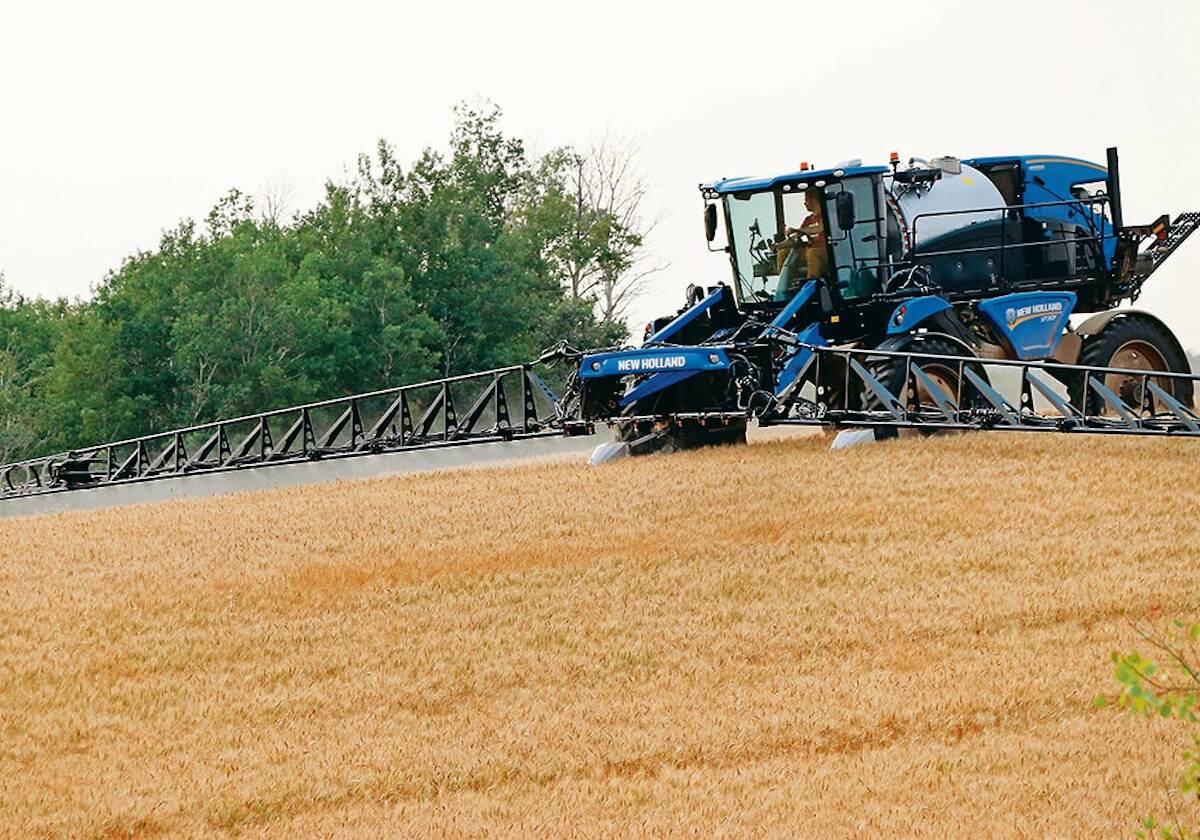
Farming still has digital walls to scale
Canadian farms still face the same obstacles to adopting digital agriculture technology, despite the years industry and policy makers have had to break them down.
“It’s a big problem not only for the people on farms but also the agronomists helping them,” Ash said.
“The technology is moving rapidly in terms of what’s happening and the deployment of it. With that comes a challenge because you’re talking about new types of tools that aren’t traditionally used on farms.”
Some of the available tools are providing the farmers with more information, but the agronomists and farmers themselves want to know what to do with that information and why.
You might have a soil moisture probe. As the agronomist you need to know what it does, what the information means, and how do you use that information to solve specific problems.
Ash stresses that knowing how to use new tools and information for a specific problem is something agronomists are going to have to continually learn.
“As a person working in the field, you’ll need to have that knowledge because you’ve got to understand how a specific tool works, how to solve problems as they arise, and what does the data coming off of that device mean for the problem you’re looking at.”
Ash said that the function of an agronomist is still the same, but the way they do their job will change as the tools available to them evolve.
“With any job, especially one with as much science and technology involved as agronomy, as the tools get better our knowledge base on how to use those tools to meet our goals will need to adapt.”
Ash says one aspect making things more challenging is the high number of new products and tools available, and trying to get everyone adequately trained in using each new piece of technology is going to be a struggle.
“What makes things difficult right now is the number of new tools and products available to both farmers and agronomists. It’s hard to expect your agronomist to be an expert on a brand new product, but at the same time that’s also partially what farmers are paying them for, so it’s going to be a race to stay informed.”
The technology advancements in agriculture are something to admire, but farmers and others in the industry have been forced to adapt quickly.
People who started driving cabless tractors now have GPS systems that drive the tractor for them. When you look at the number of new tools available to the average farm even in the last decade, it’s easy to sympathize with the farmers and agronomists who have had large learning curves trying to stay current and grow with the industry.
But what about the up-and-coming agronomists who are currently studying and preparing for their careers? Are they learning to use the new technologies?
“There’s a retooling that’s going on (right now), and the universities and colleges are gearing up to adjust to that for the people going through various agriculture programs.”
Ash says that the education programs will have to address the new tools, but there’s no “list” of tools or products that they’re required to teach about and curriculum changes won’t be immediate.
“In today’s world, many of the universities are big organizations and it’s hard for them to move and adjust to the new realm because the business side of this is moving so fast.”
Balancing the number of new tools and the knowledge needed to accurately use these products is enough to make anyone dizzy. So how do we get everyone on the same page? What would that program look like?
“I see a huge opportunity for e-learning and online education,” says Ash.
“The only way you can reach out to the vast number of people we’re talking about is to do an e-learning platform where you have curriculum and content on the issues that you’re dealing with. It could be on disease management, or even on communication issues dealing with programs and SIM cards, but all that content has to be there.”
Ash says that ideally he’d like to see a digital agronomy program that combines the technology and science side with the agronomic aspects.
“It has to be easy to use with short videos, documents for reference, and some type of certification program that you go through to prove you know what a device is and how to use it.”
It seems that even though the new tools available to agronomists and farmers have their benefits, the abundance of them and required learning of what each tool or app does can be overwhelming.
“Today you’ve got an app for everything, and that’s a problem in the sense that there are too many things being pushed to the farmer. If I have 15-20 apps I need to check to solve a problem, that’s not good either. The big companies are working on how to synthesize that data into one coherent answer… That has to happen to make things efficient for the end-user, whether you’re the farmer or the agronomist helping a farmer.”
Ash says that while the role of the in-field agronomist is changing, a new type of agronomist altogether could emerge from the technology changes.
“In the future I can see a digital-agronomist type whose focus is managing a set of farms or fields, looking at the data and monitoring similar to a stock market analyst. They’d see the data flowing in, in real time, be able to analyze it and then relay that information to boots on the ground to solve a problem or make a final decision.”
If anything in this world is constant, change is one of it, and the role of the agronomist is sure to continue evolving alongside the available tools and technology.
When faced with a new problem it might scare you to hear your agronomist say, “I’m not sure about this,” but it’s nice to know that everyone is in this together trying to stay afloat the tsunami of information and products flooding the marketplace today.
Ash ended the interview with the reminder: “A lot of these tools are brand new, and simply put, even an experienced agronomist is going to have to be retrained in some of these areas.”







